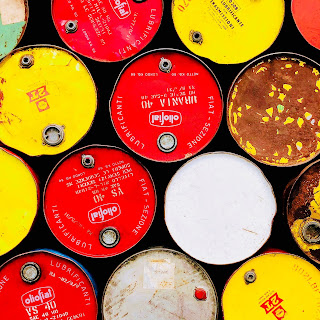Measure of Oil and Gas Reserves Drops $840 Billion in One Year
From Forbes:
Connect with us on Facebook and Twitter!
Follow @EnergyNewsBlog
It was estimated that when oil was $100/bbl, there was a total of 1.7 trillion barrels of proved reserves globally. The aforementioned article argues that this estimate may be overstated by about 875 billion barrels. It may very well be, but that doesn’t mean the oil isn’t there. It just means that at $40/bbl, there aren’t 1.7 trillion barrels that can be economically produced.
Each year, companies trading on U.S. exchanges must report the amount and estimated value of their oil and gas reserves. These estimates are done according to U.S. Securities and Exchange Commission (SEC) guidelines, and are provided in each company’s annual report.
The value of reserves is reported as a standard discounted cash flow (DCF), which is typically known as the standardized measure (SM). The SM is defined as the present value of the future cash flows from proved oil, natural gas liquids (NGLs), and natural gas reserves, minus development costs, income taxes and exploration costs, discounted at 10% annually.
Annual reports have now been filed, so the results are in. Of the 125 oil and gas companies in my database that reported proved reserves to the SEC, 92 reported declines in their proved oil reserves. The largest decline was reported by Royal Dutch Shell , which saw a decline of 827 million barrels in its proved oil reserves in 2015. Other large declines were recorded by Occidental (461 million barrels), Hess HES -1.17% (246 million barrels), Apache APA -0.81% (225 million barrels), and Anadarko (216 million barrels).
Cumulatively, these 92 oil companies reported a decline in reserves for 2015 of about 3 billion barrels (11 billion barrels of oil equivalent if natural gas proved reserves are included). That’s a big number, but it only becomes truly impressive when the value of these reserves is tabulated.
Keep in mind that the Standardized Measure is based on both the overall amount of proved reserves — which declined — and also the value of reserves that remain on the books. The decline in commodity prices had an enormous impact on the latter.
At year-end 2014, the SM of companies reporting to the SEC was $1.4 trillion. At year-end 2015, that number was reported to be $560 billion — a year-over-year decline of $840 billion. Only three of the 125 companies in my database reported a year-over-year increase in the value of its reserves. The Energy Information Administration (EIA) recently tabulated that U.S. oil companies lost of total of $67 billion in 2015, but given the dramatically reduced value of reserves that’s a drop in the bucket compared to what it could be with an extended oil and gas bear market.Read more by clicking here.
Connect with us on Facebook and Twitter!
Follow @EnergyNewsBlog


